Nocturnus AD
2019-05-16
by Niklas Göransson
American drummer and vocalist Mike Browning discusses his turbulent past in Morbid Angel, Incubus, and Nocturnus – as well as his lifelong obsession with the occult.
This article can also be found in Bardo Archivology Vol. 2, a printed anthology with selected features from the online archive. Additional content includes NÅSTROND, VOMITOR, XIBALBA ITZAES , RYAN FÖRSTER, ANGELCORPSE, THE RUINS OF BEVERAST, ASCENSION, MALOKARPATAN, Manhunter: The Story of the Swedish Occultist and Serial Killer Thurneman, WARDRUNA, FORGOTTEN WOODS, LIFVSLEDA, SEIGNEUR VOLAND, and WOLCENSMEN – all presented in ambitious aesthetics with plenty of custom artwork. More information here.
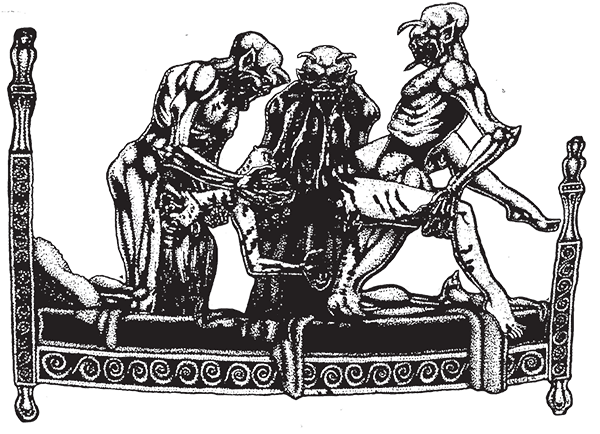
– Well, I’d say that “Paradox” is more of a continuation of themes from NOCTURNUS’ 1990 album “The Key” than anything else. Four of the songs connect back to the main “Key” story, one to “Lake of Fire” and “Standing in Blood”, another to “Neolithic”. There’s also an instrumental track. Overall, we wanted something heavy and raw but also for the listener to be able to hear all the different instruments and layers without making it sound too polished.
Besides his work with NOCTURNUS and INCUBUS, Mike Browning is primarily known as one of the founding members of MORBID ANGEL. He performed drums and vocals on “Abominations of Desolation”, which was initially recorded for David Vincent’s Goreque Records in 1986 but only put out by Earache in 1991. MORBID ANGEL themselves have consistently referred to this as a demo which was released officially in order to combat bootlegging. Mike sternly objects to this demo definition and has even taken to posting a label contract on Facebook to prove that the recording was, in fact, an album. Despite the cult underground status of “Abominations…”, it could be said to showcase some technical inefficiencies later remedied on MORBID ANGEL’s 1989 debut, “Altars of Madness”. Consequently, perhaps Trey Azagthoth‘s referring to it as a demo makes some sense in this context?
– I signed a record contract with Goreque and then recorded a full album in a real studio with the legendary Bill Metoyer engineering it. There are also a few things out there written by Trey himself where he clearly states that the album “Abominations of Desolation” was coming out. After it had been recorded, we played three shows and Sterling Scarborough replaced John Ortega on bass. Not a word was said about technical shortcomings, everything was all set to go. It wasn’t until I caught Trey with my girlfriend and beat the hell out of him – which led to the band splitting in half – that he decided not to release it. Prior to this, “Abominations…” had been recorded and was going to be presented as MORBID ANGEL’s first LP. These comments about it not being technically good enough only came once I was out.
One thing I wasn’t entirely clear on was if Mike, following his eviction from the band, even had the recording himself. Seeing as how there were bootlegs in circulation, someone obviously did.
– I’m pretty sure we all had a copy of the final mix, but I don’t think it had been mastered back then – if so, it would’ve happened after my departure. Based on what I’ve heard from multiple sources, it was John Ortega who started sending it out to get Trey back for firing him. Ortega remained active in the scene with his MATRICIDE project, so he was clearly in contact with the right people to bootleg the album.
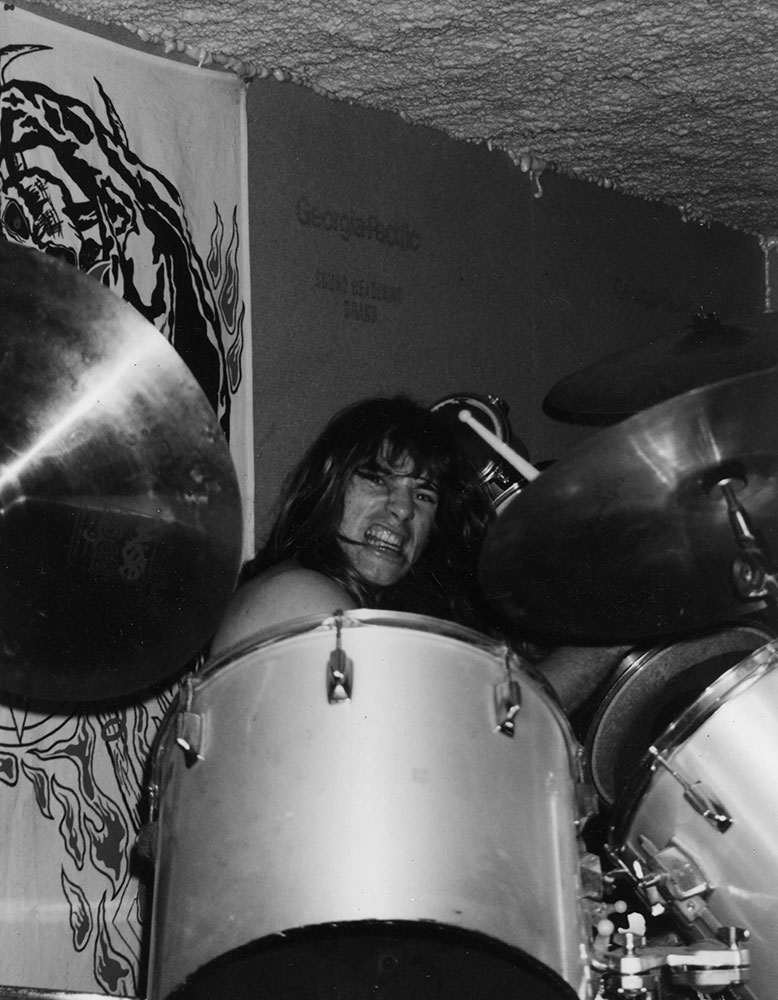
Mike has previously described being taken by complete surprise when Earache released “Abominations of Desolation” in September 1991.
– I didn’t think it would ever happen, since the album had already been bootlegged to death. I knew that if someone wanted to hear it, they could find the recording pretty easily on just about any tape trader list. I never thought it would be put out by Trey and David through Earache, especially when I was on the same label with NOCTURNUS. I remember seeing my friend Jim at the gas station and he had “Abominations…” blaring through the car stereo. I asked him, ‘What version is that? It sounds really clear’, and he said it was the Earache release which had just come out. I was on the label but knew nothing about it! I immediately contacted them: they’d bought the tapes from David Vincent and then released a limited edition in order to stop the bootlegging. Dig from Earache told me it was David’s decision to not credit anyone by name or picture in the booklet. By leaving out who played on the album, or who wrote what, it was treated like a bootleg of a bootleg by both them and Earache. Could you imagine doing a real “Abominations…” remix from the original reels!
How did you feel the first time you heard “Altars of Madness”?
– I’d seen them practising for the album and heard parts of it while they were recording. David was trying to sound like me back then, because on “Blessed are the Sick” the vocals drastically changed to the style he still uses to this day. I knew the public was going to like it, but, at the same time, NOCTURNUS were also signed to Earache and in the process of writing an album I knew could stand on its own and that didn’t sound even a little like MORBID ANGEL. Back then, everyone had more of a brotherhood than a competition.
In the late 80s and early 90s Mike seemed to be on good terms with MORBID ANGEL, even playing shows together. Also, if I’m not mistaken, it was Trey who got NOCTURNUS the record deal with Earache in the first place. Obviously, something happened after this.
– Things were okay for a little bit, but once they’d signed to Giant Records it seemed Trey and David’s egos got too big to speak to me – especially once I was out of NOCTURNUS and in ACHERON. Trey and Mike Davis were hanging out a lot, but something happened between them regarding Trey’s ex-wife so they also stopped talking. That went down after I was out of NOCTURNUS though, so I don’t know much about it.
I was told you were later barred from some goth club in Tampa for having publicly ridiculed “Illud Divinum Insanus”?
– That did happen. Sure, I’d been making fun of the album online, but I was far from the only one and definitely not the first; people who got advance copies to review were already hating on it way before I even heard it myself. But Gen came up to me in this club called The Castle, where she was having sexual relations with the owner whilst married to David, and used her power to have me permanently banned. So, yeah, I got thrown out from a club because I mocked the album. I knew from the first time I met David Vincent – who wore a right-side-up gold cross earring and a red, white, and blue hockey jersey – that he was what we used to call a poser!
As Mike mentioned earlier in the conversation, following the “Abominations…” recording he played three shows with MORBID ANGEL. Since Trey tends to largely avoid the pre-Vincent era, it’s difficult to find much information about this.
– We played twice at Rocky Point Beach Resort, then we got Sterling and did one show with him at a place called The Volley Club – that’s when AMON, who later became DEICIDE, opened for us. Our first Rocky Point show was videotaped but not the second, which is a shame because that one was really crazy. Huge winds and a big black cloud came over the stage while we were playing and then disappeared as soon as we were done! We definitely had a really good following and people loved what we were doing and that it was real. However, the band probably would’ve imploded in a different way because Trey and Sterling were really butting heads over all kinds of things.
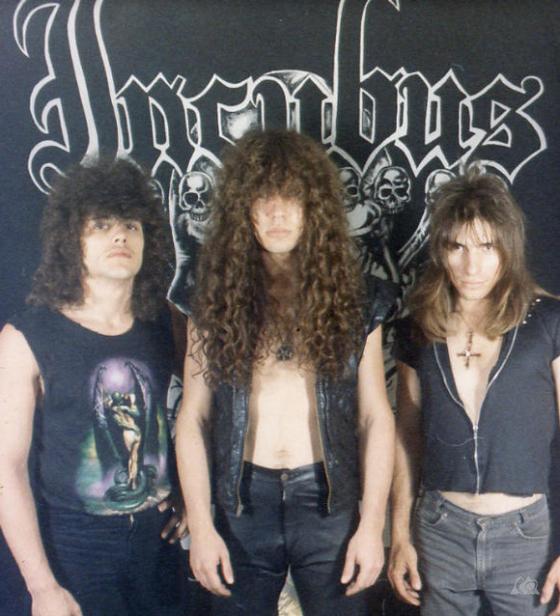
With Mike out of the band, Sterling followed. After enlisting guitarist Gino Marino they resurrected Scarborough’s old project INCUBUS, then wrote and recorded their now-classic 1987 demo within a few months’ time. Sadly, nothing more manifested out of this. Besides the tape, there’s no more INCUBUS material at all – not even rehearsal recordings. That’s quite rare for bands from this era. Someone told me the reason for this was that Sterling objected and would even threaten violence if anyone attempted to tape their practices.
– Yes, that’s true! In MORBID ANGEL we always recorded our rehearsals with an old-style portable cassette jam box, but not with INCUBUS – Sterling said he didn’t want anything taped. We didn’t have a PA either, so we never actually got to hear him sing until we were in the studio for the demo recording.
There are conflicting reports about the band’s demise. According to Metal Archives, Mike ‘left INCUBUS to form NOCTURNUS’ – but Gino claimed in a 2014 interview that ‘INCUBUS broke up because of fighting, drinking, and the satanic stuff.’
– One day, when I was at work, Sterling and Gino went to the beach and got really drunk and then ended up fighting in front of some girls. Gino almost knocked Sterling out and then took off. Once I got home, Sterling told me Gino was out of the band. At that point, I’d had quite enough so I left to form NOCTURNUS. Sterling went back to Atlanta and was later followed by Gino, who attempted to play with him again. As far as I know, it never really went anywhere with the two of them.
One of Mike’s first moves was calling Richard Bateman, bassist in the original NOCTURNUS line-up, saying ‘Hey man, I’d just like to play with somebody that doesn’t have a bunch of weird stuff going on.’ Ironically, Bateman himself would also end up scuffling with Gino.
– That actually happened a lot later, in 1999, when I first tried putting the original NOCTURNUS line-up back together. Richard had booked a show and we found out he’d asked the club owner for money and she gave it to him which he never told us. Gino was going to beat Richard up right there on the spot, in the practice room, in my house. I stopped them from fighting but Gino quit and we ended up having to find another guitar player. That was the last time I ever played with Gino.
We’re getting slightly ahead of ourselves here. Following the cessation of INCUBUS, Mike went on to form NOCTURNUS as drummer and vocalist – recruiting the aforementioned Gino Marino and Richard Bateman along with Vincent Crowley, who would later found ACHERON. After two demos, NOCTURNUS released their classic debut “The Key”, which, in October 1990, became the first death metal album to incorporate keyboards. By then, only Mike Browning remained from the original setting; he was joined by guitarists Mike Davis and Sean McNenney, keyboard player Louis Panzer, and bassist Jeff Estes. The latter departed shortly after the album came out and was replaced by what appears to have been another colourful character.
– Haha, yeah! We needed a bass player for upcoming tours, so we auditioned a bunch of people and got this guy from south Florida, Jim, who none of us knew at all. Once we were out on tour, he began acting really strange… like, having full-on out loud conversations with himself. Then, during the Grindcrusher tour with NAPALM DEATH and GODFLESH, after the Orlando show we all headed back to Tampa in our girlfriends’ cars and Jim was the only band member on the tour bus. Some girl wanted to do a NOCTURNUS interview for her high-school paper but none of us besides him were there. So, they went to the back room of the bus and the driver told us the next day that she came running out, crying, and took off before he could talk to her. We questioned Jim and he just kept mumbling about her being a bitch but wouldn’t tell us what actually happened, so we fired him as soon as the tour was over.
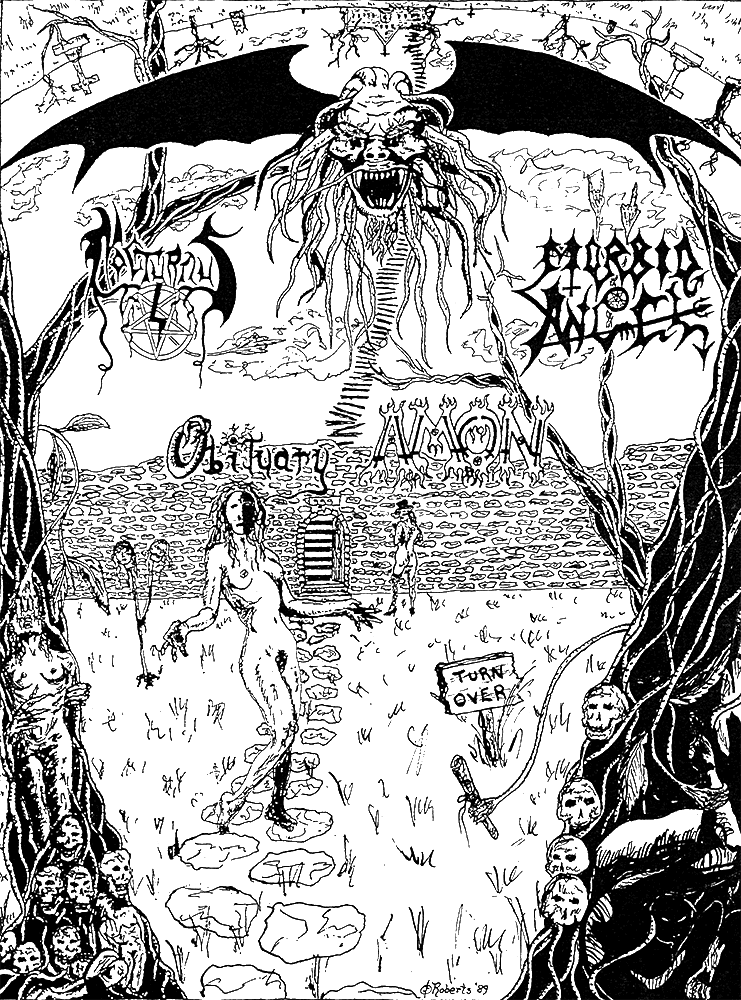
NOCTURNUS’ second album, “Thresholds”, was released in May 1992. By then, Earache had forced them to get a dedicated vocalist, believing their live performances to suffer from the lack of a frontman. The remaining members also outvoted Mike in terms of lyrical direction, which meant NOCTURNUS lost all remnants of darkness. Already in shaky relations within the band, Mike was fired soon after the album came out. The mutineers then went on to trademark the name, put out a live DVD without consulting those featured in it, and release a compilation with demos none of them played on. Furthermore, many years later, when Mike re-formed NOCTURNUS with the original members, they threatened to sue him.
– All of that was orchestrated by Lou Panzer and his sidekick Sean McNenney. In fact, Davis, Mowery, and Izzo all told me they didn’t know anything about the trademarking until afterwards. It’s right there on the government’s trademark website that Panzer was the head of all this – he patented the NOCTURNUS name and logo in 1992, after “Thresholds” was released. He lives in a different state now, I haven’t seen him around for at least seventeen or eighteen years.
The episode following Mike’s forced departure was not exactly an unending triumph for the usurpers. Earache wanted them to record a sample EP, which they did and then ended up swiftly dropped from the label. Six months after booting the band’s founding member, NOCTURNUS had ceased to exist. Interestingly, one old interview contains a passing remark of Mike having laid a curse upon them.
– I may have done that, yes, haha!
Mike has consistently, from his very early interviews to the most recent, spoken at length about his lifelong passion for esotericism.
– I’ve been interested in the occult ever since high-school, that’s never changed. I’m pretty much the same type of person I was back then, just more knowledgeable. The only NOCTURNUS member into anything remotely occult was Mike Davis, but he wasn’t serious about it. Mike only liked to blaspheme because he hated God and religion in general. I tried finding people who had at least some interest but true occultists in metal are pretty rare. You’d think there would be a lot of them but, in reality, very few metalheads are actual practitioners. A lot of musicians are fine with being blasphemous against Christianity and so on, but not many are serious regarding the occult. I’d say about ninety percent of guys in ‘evil’ bands don’t really practice anything – a lot of people out there are fooling their audience into believing them to be something they’re really not.
There can’t exactly have been an abundance of esoteric literature available in Florida back then?
– My mom was into witchcraft, so she had a few books on the subject and never made me get rid of any of the occult stuff I acquired. None of my friends were allowed to own writings or even records of occult nature so their parents threw away or burned their books and albums. For me, every time I read a book it would lead me to even more occult teachings and my hunger for further knowledge has never lessened or changed. We had no internet back then but, luckily, we had a really great occult bookstore in Tampa called Merlin’s Books. I became friends with the owner, who was into high magick and a very prominent member of the real Golden Dawn, and he’d always show me books he thought I might be into. He was also good friends with the two guys who wrote the Simon Necronomicon; they owned a bookshop in New York called the Magickal Childe. So, luckily, I had access to all kinds of occult material and even personal tutelage, which taught me quite a bit.
Conducting my research for this, I was reminded of how different the New York and Florida styles of death metal were. The musical qualities of the respective scenes have obviously been discussed aplenty, but I was thinking more in terms of thematic content. Whereas the New Yorkers focused on gore and straight-forward blasphemy, the Floridians were far more involved in all things arcane and theological. It wouldn’t be beyond the realms of reason to attribute some of this development to early MORBID ANGEL.
– I never really thought about it that way but you’re kind of right. Musically speaking, different areas of the US and Europe did have certain types of dominant music, but it seems that way lyric-wise too. A lot of people say it’s the heat down here – it does get hotter than Hell, haha! I’d say you are probably correct about our influence; when I was in MORBID ANGEL, people knew us as a serious occult band and many of them were actually scared of us because we were the real deal.
Trey has spoken about experimenting with LSD during this time, did you as well?
– Yes, we all did plenty of consciousness-altering substances back then; to me, they opened a lot of doors in my mind. I learned how balance is the true key – so, as ‘good’ as you want to be means you must be equally ‘evil’, and that’s where most people are scared off. You have to embody both if you’re seeking the ultimate occult equilibrium.
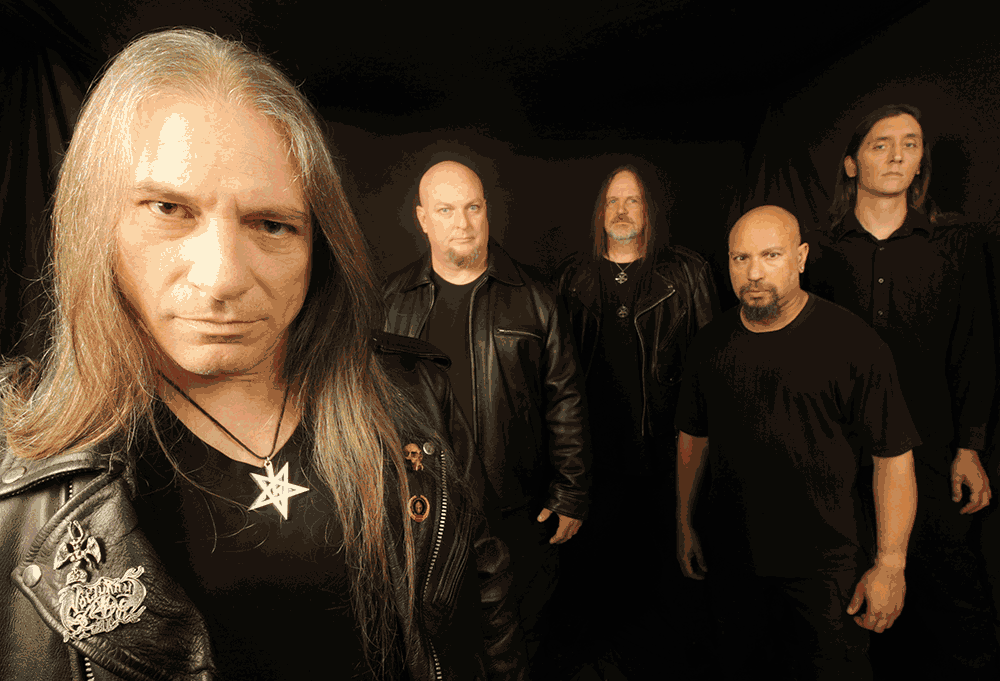
Reading the lyrics for “Paradox”, I spotted in the song “Antechamber” a reference to hidden secrets beneath the left paw of Egypt’s Great Sphinx. Out of all the mysteries surrounding the Giza plateau, the Sphinx is almost as compelling as the Great Pyramid itself. Besides matters pertaining to dating, water erosion, and astrological correlations, there’s also the contested issue of sub-surface anomalies. Such talk began in 1933 after famed American clairvoyant Edgar Cayce prophesied from a state of hypnotic trance that the Hall of Records, a mythical ancient library, was archived underneath said paw. In 1987, a Japanese team from Waseda University in Tokyo carried out electromagnetic surveys on the plateau and located a number of hitherto unidentified subterranean hollows, one of which is located directly beneath the monument’s left paw. It’s difficult to find reliable information about potential excavations, both of confirmed and suspected underground cavities. Curiously, during a 1939 divinatory stupor, Cayce stated that the Hall of Records has a twin counterpart submerged under water somewhere around the eastern coastal temple complex on the Yucatán Peninsula. As it happens, recent years have seen exciting archaeological developments at this very location. In 2015, startled researchers discovered that the Temple of Kukulkan – also known as El Castillo, the largest pyramid at Chichén Itzá – had been constructed upon a massive five-metre (16ft) thick limestone slab covering an enormous cenote. These natural groundwater pits, or sinkholes, were revered as sacred among the Maya, whose lands were prone to droughts. Then, two years later, archaeologists using sophisticated radar discovered a previously unknown tunnel leading from within the Tomb of the High Priest, a nearby pyramid, to the cenote under El Castillo. As far as I’ve been able to determine, this passageway has yet to be explored.
– I totally believe the Sphinx to have a hidden chamber beneath it; they’ve used geographical x-ray radar equipment from planes over the plateau and determined there’s definitely something underneath, but, from what I understand, Egyptian authorities won’t let anyone dig under it.
“Antechamber” also contains the following phrase: ‘As I chant the sacred tones, the machine begins to hum. Activation begins.’ Several Ancient Egyptian structures show evidence of a remarkably advanced understanding of acoustics. Especially impressive is the so-called King’s Chamber in the Great Pyramid, where both the room and its centrepiece, the sarcophagus, are built from granite – a rock renowned for its capacity to carry vibrations. This is particularly suitable for vocal styles using extended vowel sounds, such as Gregorian chanting. Vowels were sacred in ancient Egyptian religious tradition and there’s much to suggest that priests would employ them ritualistically, as noted both by the Corpus Hermeticum and 200 BC Greek traveller Demetrius. Some scholars believe the priestly chanting bouncing off the chamber walls and ceiling to have been capable of inducing altered states of consciousness. In 1996, an acoustics expert and consultant to NASA by the name of Tom Danley hauled a tonne of amplifiers, subwoofers, and monitors up into the King’s Chamber and began carrying out acoustics analyses. Upon first entering the room, his initial impression was that it was the ‘livest room’ he’d ever experienced, ‘then double that’. Danley gradually worked his way downwards from higher frequency ranges until he, around 90 Hz, noticed a powerful room mode and tangible shifts of energy. These effects steadily increased the lower he went and when hitting 30 Hz, the deep bass frequencies stirred up such an energetical surge it scared the wits out of his crew and sent them running towards the exit. It would’ve been around then he decided to abort further testing, as a safety precaution. In this context, it’s interesting to note how the chamber walls bulge over an inch and its ceiling beams show cracks repaired with archaic plaster. Egyptologists claim this was caused by a massive earthquake somewhere in antiquity, but what’s peculiar is how only the King’s Chamber appears to have been affected; there’s no such damage in any of the remaining compartments, most of which are closer to what would’ve been the quake’s epicentre. In an article for the August 2000 issue of Live Sound International, Danley argues that the pyramid’s dimensions, building materials, and sarcophagus were all constructed to amplify sounds within the room. Following his 2001 cymatics studies in the Great Pyramid, British acoustics engineer John Reid believes the King’s Chamber to not only have been designed to enhance reverberation but also transfer any sonic energy emitted in the room straight into the sarcophagus. Meaning, chanted vowels have an energising quality on the stone tomb. This notion is especially compelling when considering that the official narrative only assumes the sarcophagus to have been a burial vessel – there’s no way of telling for sure – whereas others researchers believe it to have served the function of something like a sensory deprivation container.
– Basically, yes, it was something along those lines I in had mind with that phrase. All things vibrate at a certain rate and a little differently from everything else. So, certain tones produce certain effects on things. A lot of times in magickal invocations and rituals, the tones are probably more important than the words themselves. But, of course, the intent has to be there as well. Most people don’t know how to vibrate words to make them more effective.
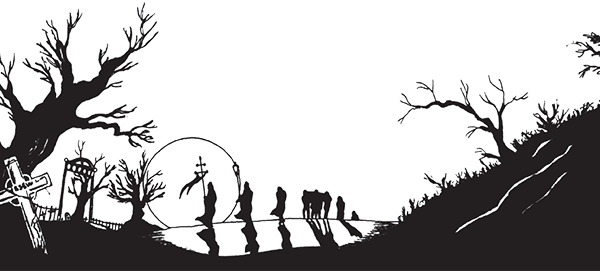
This article can also be found in Bardo Archivology Vol. 2, a printed anthology with selected features from the online archive. Additional content includes NÅSTROND, VOMITOR, XIBALBA ITZAES , RYAN FÖRSTER, ANGELCORPSE, THE RUINS OF BEVERAST, ASCENSION, MALOKARPATAN, Manhunter: The Story of the Swedish Occultist and Serial Killer Thurneman, WARDRUNA, FORGOTTEN WOODS, LIFVSLEDA, SEIGNEUR VOLAND, and WOLCENSMEN – all presented in ambitious aesthetics with plenty of custom artwork. More information here.



